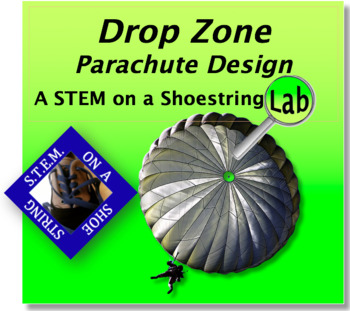Drop Zone: Parachute Design Project-Based Learning Lab
Teacher to Teacher Press
482 Followers
Grade Levels
1st - 8th, Homeschool
Subjects
Resource Type
Standards
CCSS3.MD.C.5
CCSS3.MD.C.5a
CCSS3.MD.C.5b
CCSS4.MD.A.1
CCSS4.MD.A.3
Formats Included
- PDF
Pages
15 pages
Teacher to Teacher Press
482 Followers
Description
This highly adaptable investigation will engage students of many ages and levels. Options for primary, upper elementary, and middle school are included. This is a true STEM lab that incorporates the science, technology engineering, and math components. Common, inexpensive, and easily available materials make this an easy lab to teach yet it produces maximum learning and engagement in your classroom. NGSS and Common Core Math Standards alignment are included in this "STEM on a Shoestring Budget" activity.
Total Pages
15 pages
Answer Key
N/A
Teaching Duration
3 days
Last updated Apr 27th, 2018
Report this resource to TPT
Reported resources will be reviewed by our team. Report this resource to let us know if this resource violates TPT’s content guidelines.
Standards
to see state-specific standards (only available in the US).
CCSS3.MD.C.5
Recognize area as an attribute of plane figures and understand concepts of area measurement.
CCSS3.MD.C.5a
A square with side length 1 unit, called “a unit square,” is said to have “one square unit” of area, and can be used to measure area.
CCSS3.MD.C.5b
A plane figure which can be covered without gaps or overlaps by 𝘯 unit squares is said to have an area of 𝘯 square units.
CCSS4.MD.A.1
Know relative sizes of measurement units within one system of units including km, m, cm; kg, g; lb, oz.; l, ml; hr, min, sec. Within a single system of measurement, express measurements in a larger unit in terms of a smaller unit. Record measurement equivalents in a two-column table. For example, know that 1 ft is 12 times as long as 1 in. Express the length of a 4 ft snake as 48 in. Generate a conversion table for feet and inches listing the number pairs (1, 12), (2, 24), (3, 36),...
CCSS4.MD.A.3
Apply the area and perimeter formulas for rectangles in real world and mathematical problems. For example, find the width of a rectangular room given the area of the flooring and the length, by viewing the area formula as a multiplication equation with an unknown factor.





